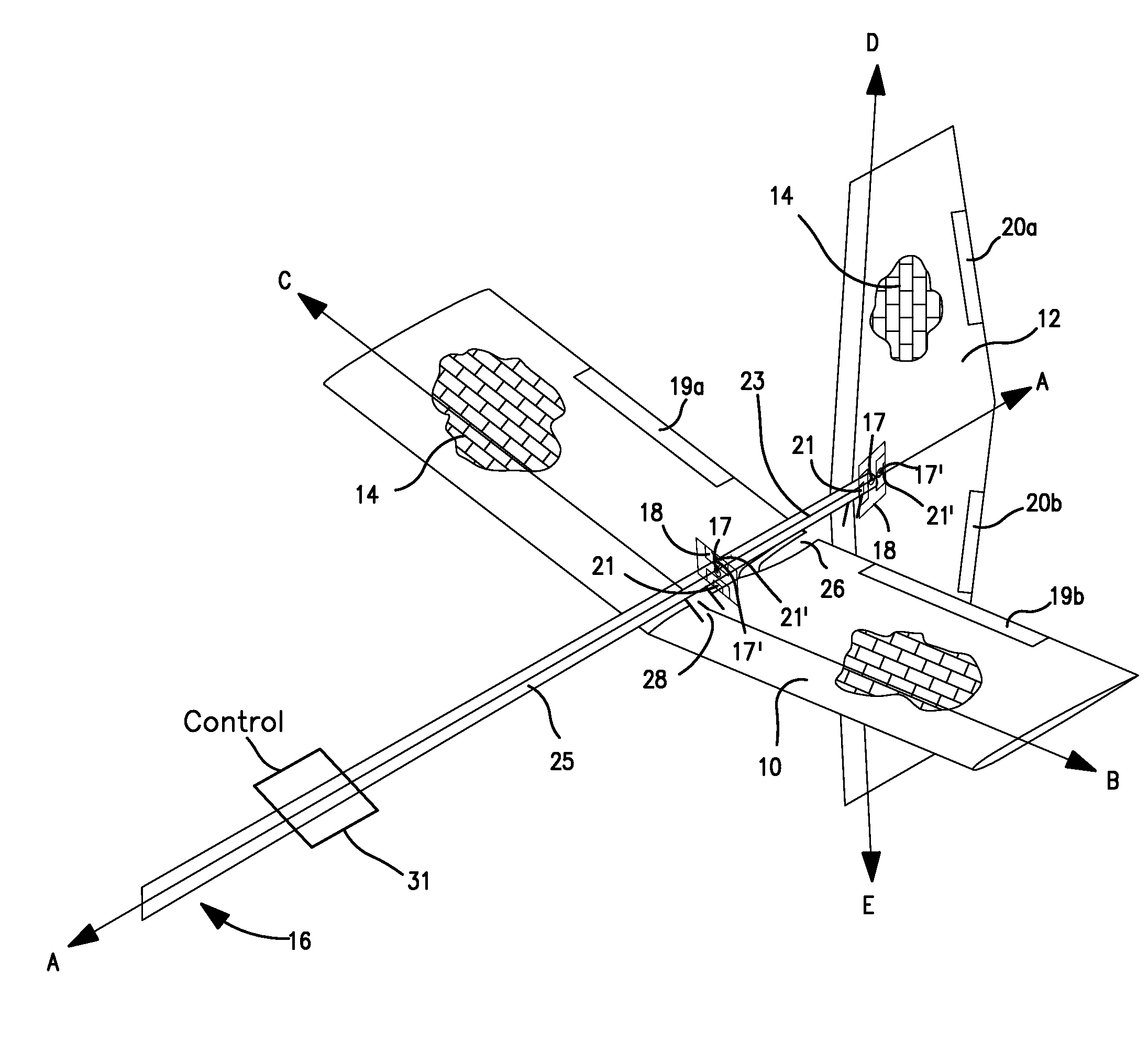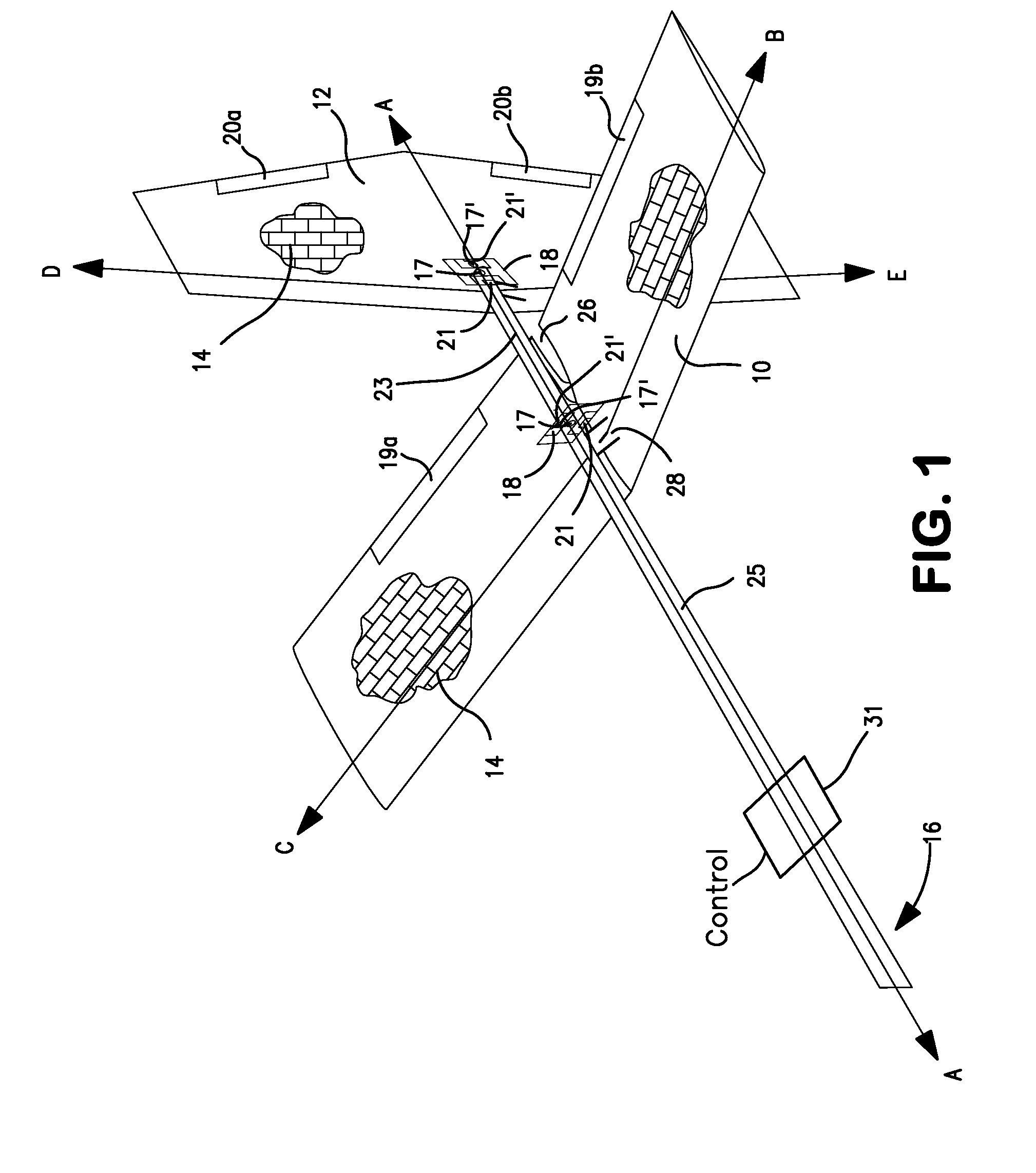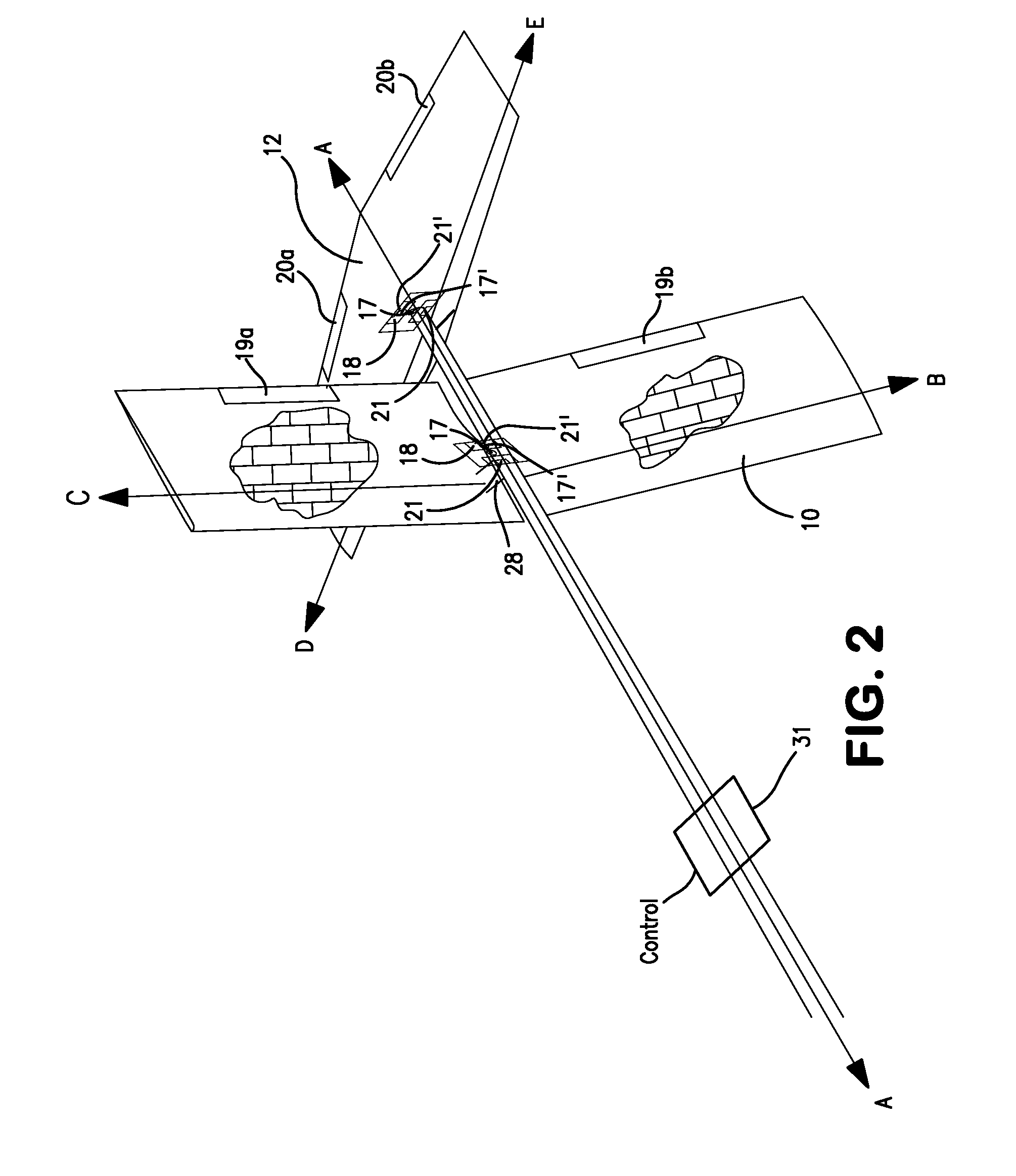Tail-mounted pointable solar panels for solar-powered aircraft
a solar panel and solar-powered aircraft technology, applied in the direction of energy-efficient board measures, transportation and packaging, and efficient propulsion technologies, can solve the problems of large weight and/or aerodynamic drag, small use of horizontal panels for solar-powered aircraft that can operate at higher latitudes, and large penalty in mass and/or drag
- Summary
- Abstract
- Description
- Claims
- Application Information
AI Technical Summary
Benefits of technology
Problems solved by technology
Method used
Image
Examples
Embodiment Construction
[0028]In a preferred embodiments of the present invention, instead of a unitary X-shaped tail assembly, the tail assembly is split into two or more separate tail components, with at least a first (front) tail component 10 preferably located fully in front of a second (rear) tail component 12. Preferably, in normal flight, the tail components 10, 12 are rotated about roll axis A to be substantially perpendicular to each other in the front view. For example, FIG. 1 depicts the tail assembly for night-flight or flight where the sun is directly overhead. The first tail component 10 is positioned as a traditional fixed-wing horizontal stabilizer, while the second tail component 12 is positioned as a traditional vertical stabilizer. The solar cells 14 on the first tail component 10 are positioned to capture solar energy.
[0029]In FIG. 2, the front tail component 10 is rotated to a vertical position, to capture solar energy when the sun is on or near the horizon (or when the aircraft is in ...
PUM
 Login to View More
Login to View More Abstract
Description
Claims
Application Information
 Login to View More
Login to View More - R&D
- Intellectual Property
- Life Sciences
- Materials
- Tech Scout
- Unparalleled Data Quality
- Higher Quality Content
- 60% Fewer Hallucinations
Browse by: Latest US Patents, China's latest patents, Technical Efficacy Thesaurus, Application Domain, Technology Topic, Popular Technical Reports.
© 2025 PatSnap. All rights reserved.Legal|Privacy policy|Modern Slavery Act Transparency Statement|Sitemap|About US| Contact US: help@patsnap.com



